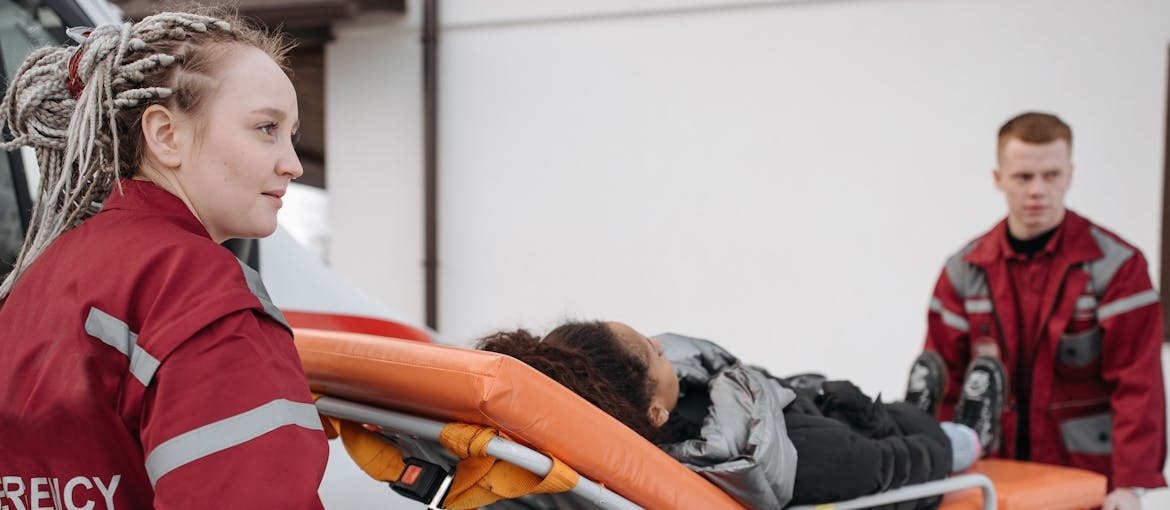Over 80% of first responders face symptoms of mental health issues, but many don’t realize it’s burnout. You might think it’s just exhaustion or a bad mood, but it runs deeper. Burnout in first responders often looks like depression, PTSD, or even substance use. That’s why it gets missed so often—and why it gets worse over time. If you work in emergency services and feel numb, angry, or disconnected, it’s not something to brush off. You’re not weak, and you’re not alone. Burnout is real, and it can lead to serious mental and physical health problems. Many addiction treatment centers in West Virginia now offer help designed for first responders. Getting support early can protect your health, your relationships, and your future. Keep reading. The signs might be easier to spot than you think.
What Is Burnout in First Responders?
Burnout in first responders builds slowly. It often starts with sleep issues, low energy, and irritability. You might feel numb or detached. Over time, it affects how you think, work, and connect with others. Many first responders don’t see it coming until it’s serious. You show up, do your job, and push through. But burnout isn’t just tiredness. It’s a mental health issue that needs real care.

If you’ve seen too much, dealt with trauma, or rely on unhealthy coping, you’re not alone. Rehab for first responders is built to address this kind of burnout. It combines therapy, rest, and substance use support. Knowing how to recognize burnout and addiction in first responders is the first step. You can recover. You just need the right tools and people who understand what you’ve been through.
How Burnout Mimics Other Mental Health Conditions
Burnout doesn’t always look like a breakdown. You might seem fine on the outside. But inside, you feel overwhelmed, disconnected, or lost. That’s why it’s hard to catch. The symptoms can mirror PTSD, anxiety, or depression. In fact, depression masks signs of substance use in high-functioning adults, especially those in emergency services. First responders are trained to hide pain. You might drink more, isolate, or feel hopeless and not connect that to burnout.
Misreading it leads to the wrong help—or no help. That’s dangerous. When untreated, it can grow into a bigger problem like addiction. PTSD and addiction in EMTs and police officers are often linked to unrecognized burnout. It doesn’t have to get that far. Learning how can first responders get help for addiction and stress starts with naming the real problem: burnout.
Long-Term Risks of Untreated Burnout in First Responders
Ignoring burnout can wreck your mental health, career, and relationships. It won’t just go away with time off. The impact goes deeper and can last for years. The cost of addiction on the local workforce in West Virginia is already high. First responders play a big role in that number. Catching burnout early could prevent long-term damage. These are the risks you face if burnout stays hidden:
- Physical breakdown: Headaches, weight changes, heart issues.
- Mental decline: Anxiety, hopelessness, poor decision-making.
- Substance use: Turning to alcohol or drugs to cope.
- Career fallout: Job loss, suspensions, or forced early retirement.

Identifying the Root Cause: Burnout or Something Else?
Many first responders think they’re just tired or stressed, but it could be more. It’s easy to miss the signs when burnout feels like depression, trauma, or even addiction. Misreading these symptoms can lead to bigger problems. This is why identifying the real issue matters. Below are three key parts to help you understand what’s going on and how to take the right first step toward real support.
Screening Tools and Self-Assessments for Burnout
If you’re unsure what’s wrong, self-assessments can help. These tools ask simple questions about your energy, stress levels, and coping habits. Below are common questions used in burnout self-assessments:
- Emotional exhaustion: Do you feel mentally drained at the end of most days?
- Cynicism: Have you lost motivation or started to resent your work?
- Detachment: Do you feel numb or disconnected from others?
- Performance concerns: Are you making more mistakes or struggling to focus?
- Coping methods: Are you using alcohol, food, or avoidance to get through the day?
Role of Peer Support and Supervision
Burnout in first responders often hides behind jokes, silence, or denial. You might say, “I’m fine,” while falling apart inside. Supervisors and coworkers see you daily. They can often tell when something’s off—if they know what to look for. Honest peer support creates a space where no one feels judged. Good supervisors don’t just watch job performance.
They check in with their teams. They notice emotional changes, low energy, and withdrawal. Talking openly about stress reduces shame. It helps people admit they’re struggling before things spiral. If you’re in a leadership role, listen more. Ask twice. Push past surface answers. And if you’re the one hurting, speak up. Saying something might help someone else do the same.

Why Accurate Diagnosis Matters in Treatment
Burnout in first responders often gets treated as something else. That’s a big problem. A wrong diagnosis can lead to the wrong kind of help. It happens because burnout shares symptoms with depression, PTSD, and substance use. But each needs its own plan. Let’s say you’re tired, drinking more, and angry at work. That could be burnout—or it could be PTSD and substance use disorder.
A therapist who knows how first responders live and work will ask the right questions. They won’t assume. Getting a clear answer saves time, pain, and money. It also helps you trust the process. The sooner you know what’s really happening, the sooner you can heal. Don’t settle for quick labels. Ask for a full evaluation. Your recovery depends on it, especially when the stakes are this high.
Effective Treatment Options for First Responder Burnout
Once burnout is identified, the next step is recovery. But not every approach works the same. First responders deal with things most people never see. They need support that fits that life. The options below focus on what really helps when you’re dealing with trauma, exhaustion, and substance use. Keep reading to learn what works best for people who carry others’ pain every day and now need help for their own.

Therapy Approaches Like CBT and EMDR
Not every type of therapy fits first responders. You need something that goes straight to the core. CBT helps reframe thoughts and stop destructive patterns. It teaches real tools to change behavior fast. EMDR helps process traumatic events without talking through them in detail. That’s helpful when your trauma comes from what you’ve seen on the job. These methods aren’t soft. They’re practical. And they work.
If you’re dealing with both trauma and burnout, ask if your therapist uses EMDR or CBT. Also, check what your insurance covers. Many people don’t know that PEIA insurance rehab coverage may help pay for this kind of treatment. You’ve spent years helping others. It’s okay to take time now and heal the right way—with tools that match what you’ve been through.
Dual Diagnosis Programs for Mental Health and Addiction
Burnout in first responders often comes with drinking or drug use. It can feel like the only way to calm down after chaos. But that’s how things spiral fast. You don’t just need help with one issue. You need care that sees both. Dual diagnosis programs are designed for this. They treat addiction and mental health together. You get therapy, support groups, and medical care that targets everything at once.
That’s what makes a real difference. These programs understand the mental health challenges first responders face. They’re built for people with trauma, stress, and a need to keep things quiet. If you feel like no one gets what you’re dealing with, this kind of program might finally feel right. You don’t have to explain the job. They already know. You just have to show up.
Lifestyle Changes That Support Recovery
Therapy helps, but daily life matters too. Your routine can either help you recover or make you worse. Think of small changes that give your mind and body space to heal. These aren’t huge shifts—but they build strength over time. Below are simple habits that support long-term recovery from burnout in first responders:
- Regular sleep
- Physical activity
- Less screen time
- Healthy meals
- Downtime

Preventing Burnout in First Responders
Prevention starts long before someone crashes. It starts with workplace culture, daily habits, and small check-ins. But burnout is still common—especially when stress builds with no break. If you’ve ever wondered what are the signs of burnout in first responders, now’s the time to find out. Don’t wait until it hits hard. These next sections show what prevention looks like in real life—and how to make it happen.
Building a Culture of Mental Health Awareness
People won’t speak up if they think no one else cares. That’s why workplace culture matters. When mental health is part of the daily talk, stigma drops. It becomes normal to say you’re tired or overwhelmed. This helps people catch signs of burnout in paramedics and firefighters early. Leaders set the tone. If they talk about therapy, stress, and coping, others follow. If they act like nothing’s wrong, no one shares.
Training helps too. It teaches how to recognize burnout in first responders and respond with real care—not judgment. This isn’t just about kindness. It saves lives. It keeps teams healthy. And it gives people permission to take care of themselves. Changing culture won’t happen overnight. But every honest conversation helps. Every time someone shares, it makes space for someone else to do the same.
Stress Reduction Techniques for Emergency Workers
You can’t erase stress from the job. But you can learn to manage it better. A few small actions can lower stress before it builds into something worse. Below are brief structured respiration practices and techniques that help emergency workers feel more in control and stay grounded:
- Box breathing: Helps lower heart rate and reduce anxiety fast.
- Time blocking: Sets work and personal time clearly.
- Guided imagery: Calms your body using mental images.
- Decompression space: A quiet room after a hard call.
- Peer check-ins: Talk with someone who gets it.

Creating Work-Life Balance in High-Demand Roles
Burnout in first responders often starts when the job becomes your whole life. You work long shifts, miss family time, and forget what rest feels like. That’s not just unhealthy—it’s dangerous. Creating balance isn’t about working less. It’s about making space for recovery and joy. Say no when you need to. Schedule real days off. Use your vacation. If you’re unsure how first responders cope with job stress and addiction, one answer is boundaries.
You’re allowed to shut off. You’re allowed to protect your energy. Balance doesn’t look the same for everyone. Maybe it’s seeing a therapist once a week. Maybe it’s a rule to never talk about work at home. Find what works for you. Then stick to it. That’s not weakness—it’s survival. And it can keep you from hitting a breaking point later.
Burnout in First Responders: What You Risk If You Wait
One in three first responders develops PTSD. Many never get help because their burnout looks like something else. You might feel angry, exhausted, or numb and think it’s just part of the job. But it’s not. Burnout in first responders is serious, and it doesn’t go away on its own. If you’re drinking more, feeling distant, or can’t sleep, it’s time to take it seriously. Talking to a mental health professional can help you figure out what’s really going on. It could be burnout, trauma, or both. Either way, you deserve support that works. Getting help doesn’t mean you’re weak—it means you’re protecting your life and the people who count on you. If you feel stuck, reach out. The sooner you do, the better your chances of feeling like yourself again.



